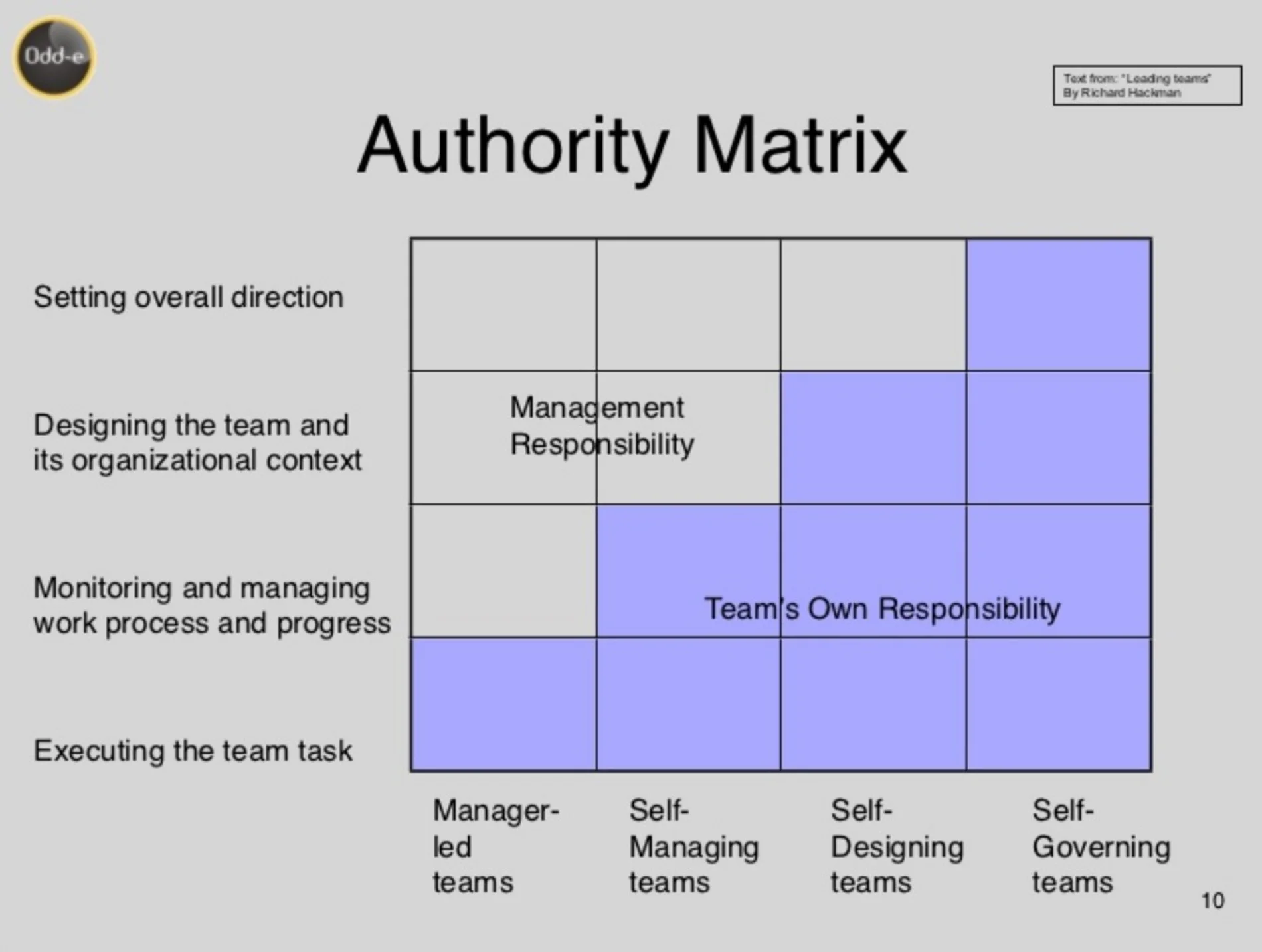
Agility needs organization
Just recently, I heard those lines again: “This is an agile project. Us leaders shouldn’t interfere, but it’s not really going the way we expected. People just aren’t taking on responsibility.” Once we take a closer look, it becomes evident that the project did have an overall direction, but there were no clearly defined responsibilities, processes and structures. Waiting for things to somehow work out is not enough. Agility requires organization. Self-organization, that is.
Self-organization starts with self
Let’s begin by defining self-organization. The term refers to a person’s self-management and comprises personal time as well as priority management. In a broader sense, it also includes self-regulation, that is a person’s ability to reflect and to control their feelings and impulses. You could even extend the concept of self-organization to self-discipline.
Here’s a simple example: Agile values like Focus and Discipline demand punctual appearance at meetings. They also require participants to refrain from distractions like checking emails while interacting with others.
All these aspects of personal self-organization promote effective collaboration in an agile setting. They are relevant parameters that need to be considered both in recruiting and HR development. Insist on self-discipline – in yourself and others!
Teams
Self-organizing teams are rightly considered the essence of agile work. They are shrouded in many myths, some of which can be attributed to the inconsistent use of the term Self-Organization.
It’s time to debunk these myths and create facts! Let’s address the term Team first. According to team expert J. Richard Hackman, a real team displays four principle characteristics:
- Common tasks that help achieve a defined mission
- Clear limits regarding information flow, coordination with other organizational units, resources and decision-making mechanisms
- Authority for self-management within these limits
- Stability across an appropriate time frame
Please don’t confuse teams with so-called co-acting groups. Members of a co-acting group work in close proximity but in parallel with each other. They share a common goal but don't need each other to fulfill their tasks. Consequently, there is minimal communication or interaction between the individual agents.
Different degrees of self-organization in teams
So much for the term Team. But how do you define a self-organizing team? In this context, self-organization has to be viewed as a generic term or, more precisely, an evolving term. Let’s look at the four key criteria describing a team’s degree of self- organization.
- Setting an overall direction for the team, such as a team purpose and organizational goals
- Designing the team and its organizational context including team members, team values and norms as well as resource allocation
- Monitoring and managing work processes
- Executing team tasks
Depending on whether the team manager or the team itself is responsible for a specific function, there are four categories of self-organization. J. Richard Hackman’s Authority Matrix illustrates this well:

- In manager-led teams, team members are only responsible for completing their individual tasks. All other functions are within the sphere of the manager. Expert groups in functional silos as well as traditional project management teams are typical examples of this category.
- In self-organizing or self-managing teams, the team is also responsible for managing and monitoring their work processes. The manager still sets the overall direction and designs the team. Many Kanban and Scrum teams fall in this category.
- Self-designing teams also design their own team and the organizational context themselves. This is true for some innovation teams in an early stage of exploration. Self- designing teams are also frequently used when scaling agile approaches.
- Self-governing teams are responsible for all four core functions. This applies to cooperatives and startups. Holistic approaches to self-organization such as Holacracy and Sociocracy are based on this type of team as well.
Clarity and discipline in practice
This definition of self-organization shows: It may be a common concept, yet we all have different notions of what it means. Predetermining the degree of self-organization with all persons involved may be a wise decision.
Applying the concept in practice will require discipline. Clearly assigned roles and responsibilities as well as transparency and commitment to agreements will be critical success factors. A leader that suddenly gets cold feet and decides to intervene in a self- organizing team may well end up with a team that isn’t self-organized at all.
Self-organization needs leadership
At the same time, leaders must clearly assume responsibility for ensuring successful self-organization. Even the best agile practices will be futile if a team lacks a clear purpose or coherence.
Leaders must clarify and effectively manage interfaces and interdependencies between self-organizing teams. In my work as a consultant, I frequently encounter frustrated teams that are supposed to handle structural problems and resource conflicts that simply cannot be solved at this level. These situations call for clearly defined processes to prevent escalation. Ideally, these processes are designed to allow easy and quick adaptation to changing conditions.
It is a serious fallacy to assume that establishing self-organizing teams is a means to an end to make an entire company agile and adaptable. A better way to achieve business agility is to radically and with the utmost discipline address all levels of your company with the question of how you are creating customer and business value and what is hampering or impeding it. This extends to strategy, portfolio management, infrastructure, processes, skills, incentivizing and, last but not least, business culture.
Challenging but effective
If you’re left feeling like it’s easier to simply adhere to a classic form of organization rather than venturing on the self-organization path, you may be right. Self-organization indeed requires much more discipline by all agents involved. It can be hard work. Just like in sports, the key to success is training, training and more training.
Self-organization may be crucial for achieving true business agility. With a proper share of discipline and endurance, you will see first results quite soon. Be bold, and things will turn out!